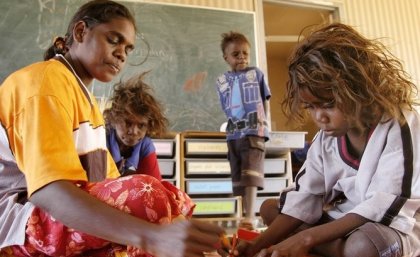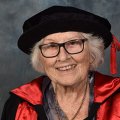
By University of Queensland ARC Research Fellow (DECRA) in Linguistics Felicity Meakins.
Originally published on The Conversation
By now we know that traditional Indigenous languages are losing speakers rapidly and tragically. Of the 250 languages once spoken in Australia, only 40 remain and just 18 of these are still learnt by children. But if children in remote Indigenous communities aren’t still learning traditional languages, then what are they learning? It is generally assumed they are shifting to English, but this is not the case.
In many areas of northern and central Australia, language loss has been accompanied by language genesis. Indigenous youth are creating new languages which combine the sounds, words and grammar from traditional languages and Indigenous English varieties. The younger generations who create these languages claim them as in-group languages which express both their traditional heritage and modern lives.
The most widespread of these new languages is a creole language, also called Kriol (confusingly), now spoken by at least 20,000 Indigenous people across northern Australia, from Cape York to Broome. Astonishingly most non-Indigenous Australians have never even heard of it.
What is “Kriol”?
Kriol is the result of successive generations of Indigenous language speakers learning English as a second language. It combines words from English with the semantics and sounds from Indigenous languages. The grammar of Kriol is a compromise between English and Indigenous languages. Often words from local Indigenous languages are also used to give Kriol a regional flavour.
Misunderstandings between English and Kriol speakers abound. If a Kriol speaker asks you for a “kopi”, you might not know whether they mean a “coffee” or “copy of something” because Kriol doesn’t differentiate “f” and “p”. The consequences of misunderstandings can be severe. For example, the Kriol verb “kilim” is derived from “kill him”, but in Kriol, it means “hit”.
Most recently, linguists have begun to observe the emergence of new languages which have more content from traditional Indigenous languages. These are called “mixed languages”. The best understood are Gurindji Kriol and Light Warlpiri, both spoken in the Northern Territory. These languages contain words and grammar from Gurindji or Warlpiri, and Kriol.
At first glance, mixed languages like Gurindji Kriol seem like a cacaphony of competing elements from Gurindji and Kriol. But Gurindji Kriol is far from being a random mix. If you ask 20 Gurindji 30-year-olds to describe something, they will give you the same combination of Gurindji and Kriol words and grammar.
Gurindji Kriol is the product of splicing and re-fusing the lexicons and grammars of Gurindji and Kriol. The result is a unique linguistic system which bears some resemblance to Gurindji and Kriol but is quite unlike its parent languages.
Languages like Gurindji Kriol and Light Warlpiri are incredibly rare. Elsewhere in the world, this highly complex level of mixing has been been observed only in Canada with Michif, a French-Cree mixed language, and in Russia with Mednyj Aleut, a Russian-Aleut mixed language.
How did these new languages come to exist?
Gurindji Kriol and Light Warlpiri come from the long-held tradition of Indigenous multilingualism and fluid language-switching practices. Hundreds of years before Gurindji Kriol emerged, Gurindji speakers were fluent in Jaminjung, a neighbouring language, and borrowed 30% of its verbs and nouns from this language. In the last 50 years, Kriol has been added to the mutlilingual reportoire and switching practices of Gurindji people, and Gurindji Kriol has emerged as a result.
Older generations are disparaging about new languages like Gurindji Kriol. Of course you would be hard pressed to find an older person who approves of a teenager’s speech anywhere in the world, but the feeling runs deeper in Indigenous communities due to the heavy loss of traditional languages. The new languages are potentially threatening to communities which maintain a strong ideological link between identity and language. Despite the concern of older people, the younger generations who create these new languages assert their identity through them as one grounded in both tradition and modernity.
And now it is these languages that are being learnt as a first language by their children - not traditional languages and not English - and it is these that children enter school with.
For policy-makers, particularly in education, new Indigenous languages have largely gone under the radar. Where these languages are noticed, educators often view them through the lens of English or traditional languages, and label them as substandard. Yet a knowledge of them is important to tailoring educational programs which take into account the first language of a student.
Anyone who has learnt another language knows that we come equipped with the knowledge of our first language. The process of learning involves mapping a path between these languages. To that end, understanding the first language of Indigenous children is essential to producing better education outcomes. And for the new Indigenous languages, more research is required to better understand the unique nature of these languages.













